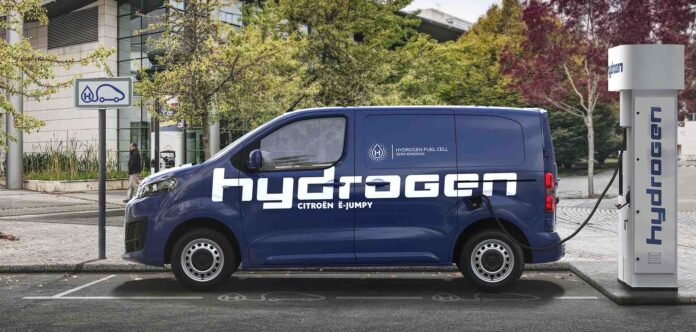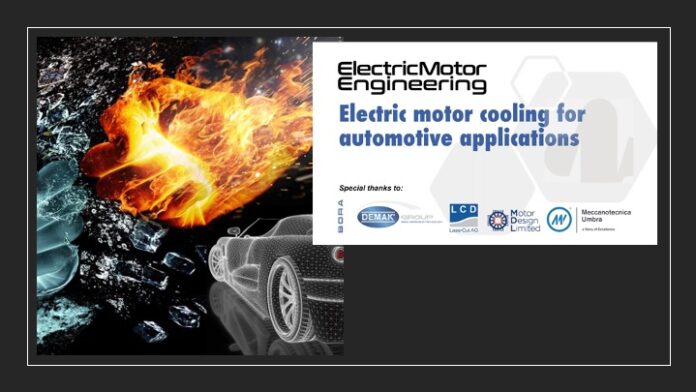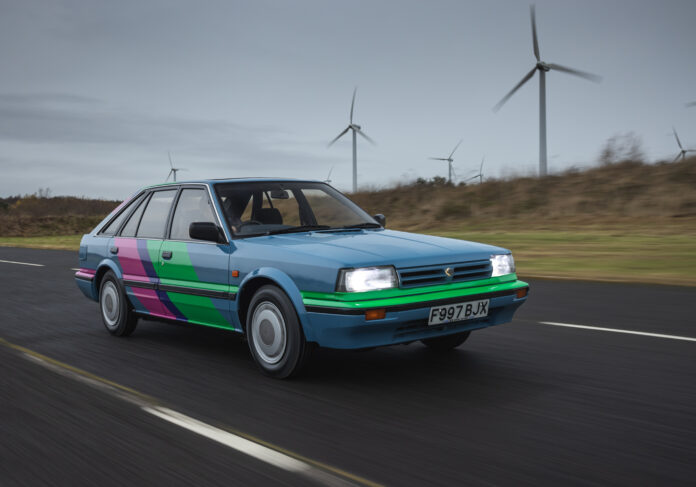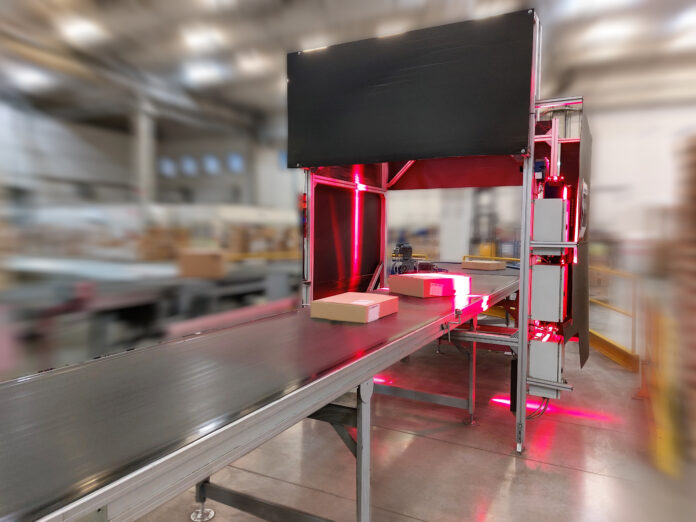Citroën is enlarging its range of electrified commercial vehicles and it has recently delivered the first ë-Jumpy hydrogen to Suez Group.
A milestone in the electrification strategy of Citroën, benefitting from huge investment plans in France and in Germany.
The hydrogen solution addresses those who need an autonomy exceeding 300 km for long travels or long journeys and call for a fast recharge to maximise the use time.
Ë-Jumpy Hydrogen is equipped with two complementary propulsion systems: a battery that stores energy and supplies electricity and a fuel cell that converts the hydrogen and oxygen of the air into electricity, water and heat. Until it is hydrogen-powered, the energy generator operates in continuous.
Therefore, the electric motor, mainly powered by the 45-kW hydrogen cell, can develop an autonomy extended by almost 350 km. 10.5 kWh lithium-ion battery acts as a reserve for an autonomy of 50 km in the WLTP cycle. Citroën ë-Jumpy Hydrogen has a range of over 400 km. Its three 700 bar carbon-fibre hydrogen tanks, which sit next to the battery under the front seats, can be filled in just three minutes.
CITROËN ë-Jumpy Hydrogen, assembled in France in SevelNord factory, is transformed into the competence centre on the hydrogen fuel cell by Stellantis Group in Russelsheim, in Germany.
Citroën’s hydrogen van
The electric motor cooling vision
To outline the state-of-the-art from the engineering point of view about Electric motor cooling in automotive applications, involving academic world and industries, it was organized a highlighting workshop that has called, to share their vision, players in automotive induced activities, from OEM, to Tier One and Tier Two suppliers. Technology is evolving to allow higher and higher efficiencies and more performing motors.
How much is it important, what is the state of the art and what are next technological moves concerning the electric motor cooling in automotive applications? Outstanding representatives of the academic and industrial world have provided their expertise and vision on this issue.
At the helm of the event, organized by Electric Motor Engineering and Tecniche Nuove and broadcast last January 31st, we have found Professor Marco Villani, professor of Electrical Machines Design and Electric Systems for Mobility at the University of L’Aquila.

The session was opened by Alessandro Ventura, Corporate Technical Director Meccanotecnica Umbra, who has cast the spotlights on Mechanical seals for electric motors cooling systems. The range of products he evaluates includes Mechanical Seals for different appliances: for automotive, for household, for aviation sector, but also for medium-duty and Hi-duty application and for hydropower applications.
Reference markets are manifold: automotive, aviation, agriculture, food&beverage, mining, energy, refrigeration, civil sector, appliances, Pulp&Paper, chem/pharma and industrial general purpose.

The stator housings and Rotor shafts for Electric motors with integrated cooling circuits were instead the theme of the speech by Philipp Bucher, Head of Sales LCD LaserCut AG. Under the magnification lens, the added values of 3D additive manufacturing in terms of improved motor cooling: integrated housing cooling, integrated shaft cooling, integrated end shields cooling, integrated power electronics cooling, integrated peripheral features, integration of weight reducing holes and minimal material need. Among the important topics that they have considered in 3D additive manufacturing there are housing and shaft designs that need to be developed from the very begin, based on the specific 3D manufacturing requirements and chances.

Giada Venturini, E-Machine Engineer Motor Design Ltd, and Husain Adam, Thermal Specialist Engineer Motor Design Ltd, spoke instead of Advanced Software for Thermal Analysis of Electric Motors. High power density, high efficiency, low cost are the advantages that can be given by advanced cooling systems. Several solutions and configurations for eMobility are discussed more in details.
«Thermal response analysis is essential for meeting the performance: machine operating temperature limits the electric loading, increasing in operating temperature cuts insulation life, magnet performance is very sensitive to temperature and copper loss is temperature dependent.

The message sounds clear: effective thermal management is critical to ensure high power dense machine lifetime and reliability. The two young engineers stressed Ansys Motor-CAD capabilities concerning both thermal and Cooling types. Wide room was also dedicated to Direct Stator Cooling & Flooded Stator Cooling and to Oil Spray Cooling, Oil jets and Oil Dripping Cooling.
The workshop was ended by the speech EV/HEV motors and advantages in terms of thermal dissipation through potting, delivered by Alberto Menozzi, Plant Manager – Technical Director, Demak Polymers of Demak Group, which can boast mechanical and chemical know-how: the company’s great value precisely derives from the combination of these two competences.

The core of his speech is the resin encapsulation of electric motors for EV/HEV applications.
Thanks to the experience gained during these last years, many advantages of a full resin potting compared to other technologies, such as impregnation and trickling. The resin is a perfect electrical insulator, and it delivers properties that are absolutely incomparable to other insulating methods, including: enhanced water and dust resistance, chemical resistance, less vibration, less noise and most of all, perfect heat dissipation and improved thermal shock resistance.
Grob awarded for its Electric Drive with Hairpin Technology
Recently, GROB was honoured by ZF with the Performance Award in the category “Operational Excellence for Non-Production Material” for its achievements in a major project for “Electric Drive with Hairpin Technology” in recognition of its high level of innovation, quality and reliability of its machines and systems in international competition.
«The Performance Award – said German Wankmiller, GROB Chairman of the Board – is a high honour and appreciation from our customer ZF, as we prevailed against all other machine and plant manufacturers. But it is also a recognition of the high innovation, quality and reliability of our machines and systems and of our performance, which we owe to our highly skilled and motivated employees in Dalian and Mindelheim. We all feel really very happy and satisfied about that».
The partnership between the two companies is sound: ZF has been a GROB customer for decades for production equipment for the well-known 8-speed HP automatic transmissions. GROB is currently working on a major project for ZF for an electric drive with hairpin technology. This order for the stator, rotor and an impregnation machine is handled by GROB with its Dalian factory in China. The systems were developed and designed at GROB in Mindelheim.
Looking for potting solutions
In the first months of 2022, Demak Group will launch a new consultancy service called “Potting Sprint” that will provide a comprehensive and customized potting project in 2 weeks only.
Demak Group has also recently released its brand-new website. Completely re-designed in its look, it has been conceived to become a useful tool for everyone looking for potting solutions in the different industries the Group serves.
Its structure looks easy to browse when looking for resin dispensing equipment, resin systems or consultancy on potting projects.
Demak has strategically focused its attention on the E-mobility section where it is possible to understand at first sight all the advantages provided by the potting technology, finding components in which Demak has already experienced potting projects, a wide selection of dispensing equipment, from compact machines to fully automatic lines, more than 200 resin systems with suitable performances for any e-mobility project, a potting lab where to perform dedicated tests.
Nissan celebrates history with the future
To celebrate the 35 years of Sunderland factory, Nissan has thought of converting a Bluebird, the first car manufactured by production lines in 1986, from thermal car to 100% electric car called Newbird.
The petrol engine and the original gearbox have been removed and replaced by a motor, an inverter and a 40kWh battery by LEAF. The battery modules have been split between engine compartment and trunk, to distribute weights in balanced manner. Power steering, brakes and heating system have been modified to be electrically powered and customized suspensions have been installed to support the additional weight of the battery pack.
In this regard, the battery socket is accessed from the original fuel flap, and the first can be recharged up to 6.6kW. The original dashboard has been adapted, so that the instrument that previously indicated the fuel level now shows the battery charge status.
The shift from thermal to electric car was managed by Kinghorn Electric Vehicles, a family-owned company headquartered in Durham, specialized in the conversion of vintage cars, by using LEAF second-life motors, inverters and batteries.
In conformity with the new long-term Ambition 2030 plan, Nissan will be a fully sustainable company, which will share in creating a cleaner, safer and more inclusive world. Such vision supports Nissan’s goal of reaching the carbon neutrality in the whole lifecycle of its products within the 2050 fiscal year.
Hand in hand with the presentation of Ambition 2030, Nissan has revealed the Chill-Out concept, the state-of-the-art electric crossover that will be implemented in Sunderland.
The investments by Mercedes for axial-flux motors
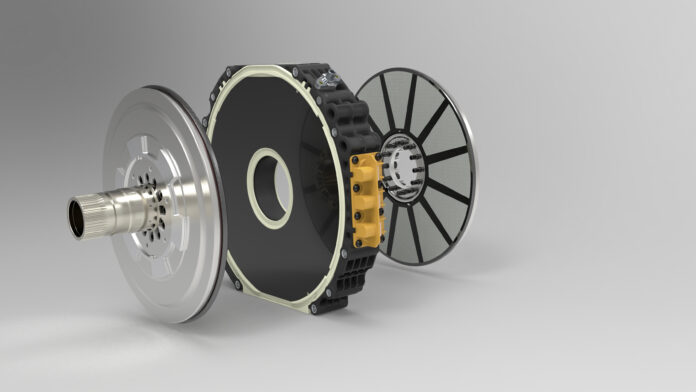
Last summer, Mercedes took over Yasa, British company that produces axial-flux motors. Recent news reveal that the Berlin factory is planning to widen its plant to host a new production line intended for Yasa motors, super-compact and super-efficient units. Works will be accomplished in six years and need an investment exceeding 100 million Euros. Moreover, the work opportunity was seized on the fly also to build the Digital Factory Campus, a structure intended for the development and optimization of new software applications in the ambit of the MO360 programme: pioneering technologies already in advanced implementation phase that in 2022 will start the pre-production.
These last moves clearly show that the Berlin structure for Mercedes is a real focus centre for its digital systems and its electric powertrains.
Jorg Burzer from Mercedes, declared: «The transformation of the automotive industry is more evident in our Berlin site than in any other Mercedes-Benz factory. The shifting from a production site for conventional drive components into a competence centre for the digitalization and the production in the electric mobility field is a significant step for us. With the production of high-performance electric motors, Berlin factory will become a fundamental pillar of the sustainable electrification strategy by Mercedes-Benz».
High efficiency for the logistics world
Geodis transport and logistic company has won the Logistic Award of 2021-year for the implementation of an innovative sorter system that recovers energy, powering strategic electric motors. The project concerns an automatic sorter system, implemented for a giant in the e-commerce, with which the player has collaborated for several years now.
The innovative aspect of such sorting system consists in the use of a linear alternator that recovers energy. The induced magnetic energy generated in the pick-up, in fact, is successively processed and transmitted in wireless modality to power the electric motors of the belts on moving conveyors. Unlike alternators, the sorter exploits the linear translatory motion and avoids the cable current dispersion, since it transmits it in wireless modality. Therefore, it is a solution that guarantees efficiency in the parcel sorting phase and, furthermore, it permits a decrease of electric consumptions, in test environment a reduction up to 70% of current was reached and, consequently, of CO2 emissions.
The witness by Fabrizio Airoldi, Country Manager of GEODIS in Italy: «This project confirms the will of studying innovative solutions that can increase the efficiency of the whole process, with lower energy consumptions and improving the use of skilful human resources operating in the various warehouses, entrusting them with higher added-value activities».
Webinar on “Electric motor cooling for automotive applications”, January 31st 2022
The international platform of technical information Electric Motor Engineering and the publishing house Tecniche Nuove, in collaboration with Professor Marco Villani, professor of Electrical Machines Design and Electric Systems for Mobility at the University of L’Aquila, on January 31st 2022, from 10.00 a.m. (CET) to 1 p.m. (CET) organize a webinar on the issue of electric motor cooling in automotive applications.
The technical implications concerning the heat dissipation in electric traction vehicles are manifold. Essentially, the high rotation speed that puts the whole vehicle power-unit to hard test.
Numerous solutions are under study to make vehicles reliable and safe; those to cool the active components of the electric motor are among the most numerous.
The workshop is aimed at highlighting the state-of-the-art from the engineering point of view, involving academic world and industries.
Addressees of these information are all players in automotive induced activities, from OEM, to Tier One and Tier Two suppliers.
The four Topics
Experts coming from the academic and engineering research world, together with suppliers of technologies and solutions, will debate the following topics during the meeting:
• Innovative cooling systems (ex. stator cooling, shaft cooling, end-winding cooling and combinations of more systems)
• «Customized» housings for electric traction motors (also manufactured with 3D printing technologies)
• Sealing systems for the liquid cooling of electric motors
• «Advanced» software for the thermal analysis of electric motors for automotive
The event will take place in live streaming in English, with final possibility of Q&A with our sector experts.
ELECTRIC MOTOR COOLING FOR AUTOMOTIVE APPLICATIONS
Online workshop – January 31st 2022
from 10.00 a.m. (CET) to 1 p.m. (CET)
 WORKSHOP PROGRAMME
WORKSHOP PROGRAMME
Mechanical seals for electric motors cooling systems
Alessandro Ventura, Corporate Technical Director Meccanotecnica Umbra
Stator housing and Rotor shafts for Electric motors with integrated cooling circuits
Philipp Bucher, Head of Sales LCD LaserCut AG
Advanced software for thermal analysis of electric motors
Giada Venturini, E-Machine Engineer Motor Design Ltd
Husain Adam, Thermal Specialist Engineer Motor Design Ltd
EV/HEV motors Potting: advantages in terms of thermal dissipation
Alberto Menozzi, Plant Manager – Technical Director, Demak Polymers (Demak Group)
In collaboration with

Voxan Wattman, speed record on two wheels
At the end of last November, in Florida the pilot Max Biaggi set a new speed record on an electric bike: at the Kennedy Space Center he reached 470. 257 km/h (292.204 mph) riding the Voxan Wattman.
The pilot worked in strict contact with the company to develop the new prototype, equipped with the same electric motor used by Mercedes team in Formula E World Championship.
Max Biaggi and the Voxan Wattman claimed the prestigious world record in the “partially streamlined electric motorcycle under 300 kg class”. In line with FIM (Fédération Internationale de Motocyclisme) regulations, the Voxan Wattman’s speed was measured from a flying start over 1 km in opposite directions, within a period of two hours. Under Federation rules, the final speed is the average of the two speeds recorded over these two runs.
«We at ROKiT – said Jonathan Kendrick, Chairman and Co-Founder of the ROKiT Group of Companies – are absolutely delighted to see the Voxan Watman achieving these new world speed records for electric motorbikes, as history tells us that speed records have a major effect in driving new technologies forward, rapidly. Technological excellence, combined with world-class engineering and piloting skill have produced outstanding results for us all. Many congratulations».
Italy: in 2035 the stop of combustion engines
On the occasion of the fourth meeting of Cite, the Inter-ministerial Committee for the Ecologic Transition, which occurred last December, the Minister for the Ecologic Transition Roberto Cingolani, Enrico Giovannini, for infrastructures and Sustainable Mobility, and Giancarlo Giorgetti, for the Economic Development, have defined the replacement terms of the vehicles with internal combustion engines, deciding, in line with most of progressed Countries, that the phase out of the cars with internal combustion engine is expected to take place by 2035,whereas for lorries and light commercial transport vehicles within 2040.
In the institutional note released we can read that “In such a course, it is necessary to deploy all solutions that are functional to the transport decarbonization, according to a logic of “technological neutrality”, then enhancing not only electric vehicles but also hydrogen potentialities”.

